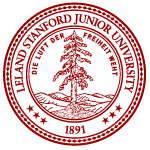 |
|
|
Undergraduate research
Undergraduates have made substantial contributions to the research of the lab, and several undergraduates have led or contributed to published research. Research opportunities have included assistance on ongoing projects in the lab under the guidance of a graduate student or postdoc, as well as independent projects typically focused around a specific mathematical problem (or occasionally, data analysis). Undergraduate research experiences have ranged from intense efforts over a single academic term or summer to longer experiences that enable students to participate more substantially in the life of the lab.Interested students are expected to have experience and interest in one or more areas of quantitative science, such as mathematics, physics, statistics, or computer science, as well as in areas of biology such as evolutionary biology, human biology, biological anthropology, or other related fields. Undergraduates at all levels have been part of the lab.
Stanford programs through which students have conducted summer research in the lab include B-SURP (Biology), SURIM (Mathematics), SURP-Stats (Data Science), and USRP (Bio-X). Recent undergraduates have majored in Mathematics, Mathematical and Computational Science, Physics, Data Science, Computer Science, Biology/General Biology, and Biology/Ecology and Evolution, and co-terminal master's prorgrams in Computational and Mathematical Engineering and Computer Science.
Publications involving undergraduates
M Doboli, H-K Hwang, NA Rosenberg (2024) Periodic behavior of the minimal Colijn-Plazzotta rank for trees with a fixed number of leaves. In C. Mailler, S. Wild, eds. Proceedings of the 35th International Conference on Probabilistic, Combinatorial and Asymptotic Methods for the Analysis of Algorithms (AofA 2024). Leibniz International Proceedings in Informatics (LIPIcs) 302: 18. Schloss Dagstuhl — Leibniz-Zentrum für Informatik. [Abstract] [PDF]
TD Gress, NA Rosenberg (2024) Mathematical constraints on a family of biodiversity measures via connections with Rényi entropy. BioSystems 237: 105153. [Abstract]
DJ Cotter, AL Severson, JTL Kang, HN Godrej, S Carmi, NA Rosenberg (2024) Modeling the effects of consanguinity on autosomal and X-chromosomal runs of homozygosity and identity-by-descent sharing. G3: Genes, Genomes, Genetics 14: jkad264. [Abstract] [PDF] [Supplement]
E Lappo, NA Rosenberg (2024) A lattice structure for ancestral configurations arising from the relationship between gene trees and species trees. Discrete Applied Mathematics 343: 65-81. [Abstract] [PDF]
ARP Maranca, NA Rosenberg (2024) Bijections between the multifurcating unlabeled rooted trees and the positive integers. Advances in Applied Mathematics 153: 102612. [Abstract] [PDF].
MC King, NA Rosenberg (2023) A mathematical connection between single-elimination sports tournaments and evolutionary trees. Mathematics Magazine 96: 484-497. [Abstract] [PDF]
X Liu, Z Ahsan, TK Martheswaran, NA Rosenberg (2023) When is the allele-sharing dissimilarity between two populations exceeded by the allele-sharing dissimilarity of a population with itself? Statistical Applications in Genetics and Molecular Biology 22: 2023004. [Abstract] [PDF]
DJ Cotter, EF Hofgard, J Novembre, ZA Szpiech, NA Rosenberg (2023) A rarefaction approach for measuring population differences in rare and common variation. Genetics 224: iyad070. [Abstract] [PDF] [Supplement]
E Lappo, NA Rosenberg (2022) Approximations to the expectations and variances of ratios of tree properties under the coalescent. G3: Genes, Genomes, Genetics 12: jkac205. [Abstract] [PDF]
E Alimpiev, NA Rosenberg (2022) A compendium of covariances and correlation coefficients of coalescent tree properties. Theoretical Population Biology 143: 1-13. [Abstract] [PDF]
MC King, NA Rosenberg (2021) A simple derivation of the mean of the Sackin index of tree balance under the uniform model on rooted binary labeled trees. Mathematical Biosciences 342: 108688. [PDF]
E Alimpiev, NA Rosenberg (2021) Enumeration of coalescent histories for caterpillar species trees and p-pseudocaterpillar gene trees. Advances in Applied Mathematics 131: 102265. [Abstract] [PDF]
A Goldberg, A Rastogi, NA Rosenberg (2020) Assortative mating by population of origin in a mechanistic model of admixture. Theoretical Population Biology 134: 129-146. [Abstract]
ZM Himwich, NA Rosenberg (2020) Roadblocked monotonic paths and the enumeration of coalescent histories for non-matching caterpillar gene trees and species trees. Advances in Applied Mathematics 113: 101939. [Abstract]
AJ Aw, NA Rosenberg (2018) Bounding measures of genetic similarity and diversity using majorization. Journal of Mathematical Biology 77: 711-737. [Abstract] [PDF]
A Goldberg, P Verdu, NA Rosenberg (2014) Autosomal admixture levels are informative about sex bias in admixed populations. Genetics 198: 1209-1229. [Abstract] [PDF]
SB Reddy, NA Rosenberg (2012) Refining the relationship between homozygosity and the frequency of the most frequent allele. Journal of Mathematical Biology 64: 87-108. [Abstract] [PDF]
M DeGiorgio*, I Jankovic*, NA Rosenberg (2010) Unbiased estimation of gene diversity in samples containing related individuals: exact variance and arbitrary ploidy. Genetics 186: 1367-1387. [Abstract] [PDF]
I Jankovic, BM vonHoldt, NA Rosenberg (2010) Heterozygosity of the Yellowstone wolves. Molecular Ecology 19: 3246-3249. [PDF]
NA Rosenberg, L Huang*, EM Jewett*, ZA Szpiech*, I Jankovic*, M Boehnke (2010) Genome-wide association studies in diverse populations. Nature Reviews Genetics 11: 356-366. [Abstract] [PDF]
ZA Szpiech, M Jakobsson, NA Rosenberg (2008) ADZE: a rarefaction approach for counting alleles private to combinations of populations. Bioinformatics 24: 2498-2504. [Abstract] [Full text at journal website] [PDF] [Software]
NA Rosenberg, R Tao (2008) Discordance of species trees with their most likely gene trees: the case of five taxa. Systematic Biology 57: 131-140. [Abstract] [Full text at journal website] [PDF] [Supplement]
Post-graduation activities for undergraduate researchers
Upon completion of undergraduate (and co-terminal MS) training, undergraduate researchers have advanced to positions in industry and non-profit employment, and to MD, MD/PhD, PhD, and post-bacc programs.Industry / consulting, data science, software (2)
Non-profits / environment and conservation (1)
MD programs (1)
— Mt. Sinai School of Medicine
MD/PhD programs (1)
— University of California, Los Angeles
PhD programs (8)
— Bioinformatics, University of Michigan
— Ecology and Evolutionary Biology, Stanford University (2)
— Electrical Engineering and Computer Science, Massachusetts Institute of Technology
— Mathematical Biology/Systems Immunology, Helmholtz Center for Infection Research
— Mathematics, Columbia University
— Mathematics, Harvard University
— Statistics, University of California, Berkeley
Post-bacc programs (2)
— Massachusetts Institute of Technology
— Ohio State University
